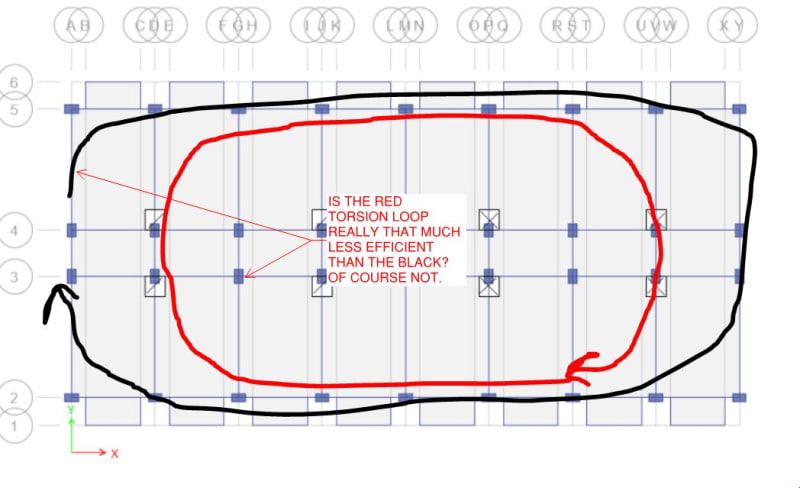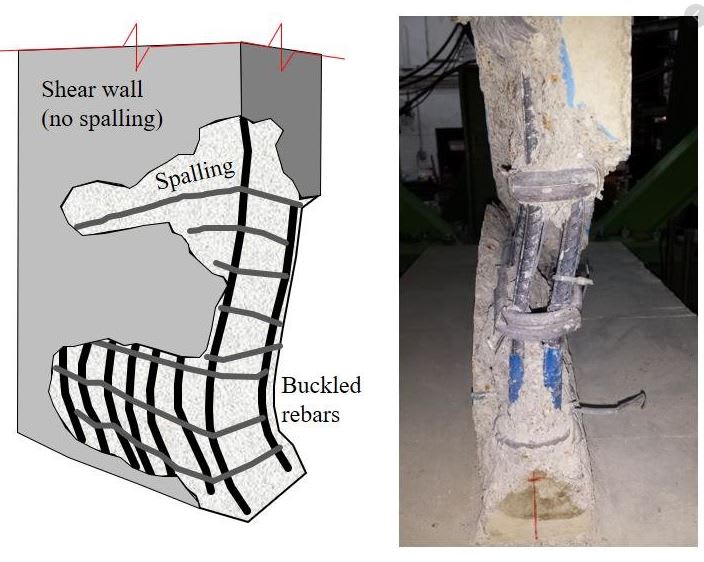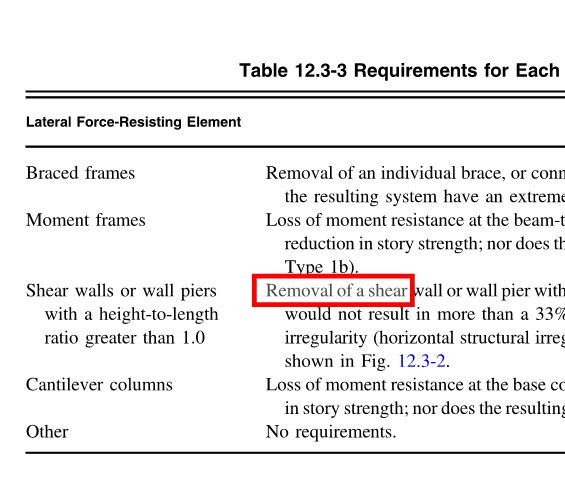HTURKAK said:
If you have a computer program that can model inelastic structures, i will suggest you , perform inelastic analysis to a similar bldg, rectangular in plan, see the contribution of of frames around the center and see what is happening to the far end, corner column.[/b]
I don't need to run a plastic, FEM analysis to know that this structure is torsionally regular. I can determine that just fine using my own judgement, experience, and intuition regarding structural behavior. The ETABS modelling is a prudent validation step for the person actually designing the structure but I am not that person.
I'm also fully away that the inner frames will be less efficient torsionally than the outer frames. That invalidates none of my previous comments. In the first sketch below, is the red torsion loop really that much less efficient or more lightly taxed than the black?
HTURKAK said:
Moreover, the lose of SW is less probable than beams and columns.
1) What makes you say that? Lateral buckling of the compression block of shear walls is actually a very common failure during seismic events.
2) Regardless of the probabilities, ASCE7 clearly means for the loss of shear walls to be considered when shear walls are used as the lateral system.
HTURAK said:
For this case ,the SW's added at 2,3 -4,5 at A and Y axis will be very efficient to reduce the torsional effects and drift control.
3) I agree that would be very efficient but I submit that it's completely unnecessary in a building where every single column is part of a bi-directional moment frame.
4) Your proposal makes most of both end walls nearly solid concrete. That costs money and may compromise architectural intent regarding fenestration etc.
HTURAK said:
earning has no age , no limits ; and i learned after 40+ years of experience ,not to comment when the full picture is not clear.
And, in the decades that I've been practicing structural engineering, I've leaned that:
5) A better understanding of fundamental structural behavior often allows one to assess situations accurately with less information and;
6) Computer modelling is an aid to, but no substitute for, genuine intuition regarding structural behavior.





